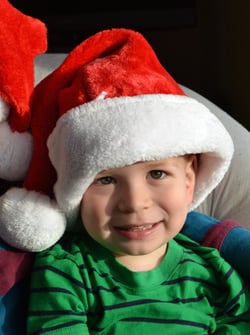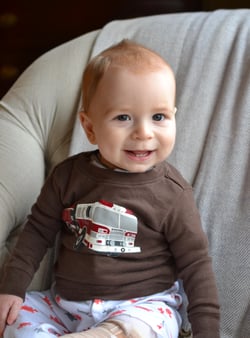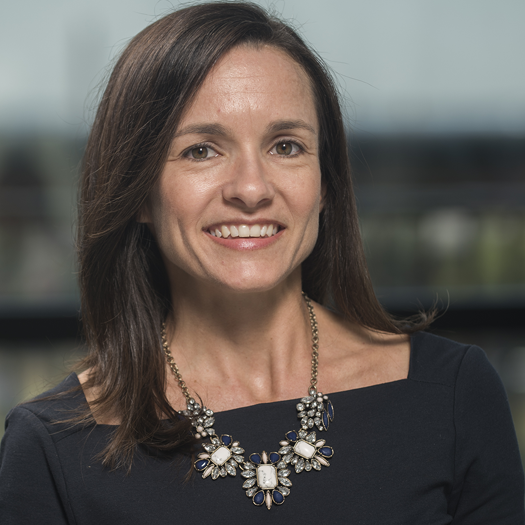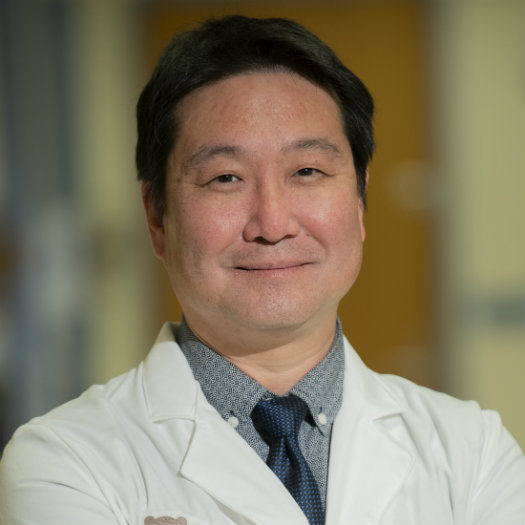
Finn's Story

When Finn was born, his parents and doctors immediately knew something was wrong. Finn’s left leg was swollen to the size of an adult head, and it continued to swell at an alarming rate. It came as a shock to his parents, who had no family history of these symptoms. The swelling appeared to be caused by a serious lymphatic malformation, and Finn was rushed from Virginia Hospital Center in Arlington, VA, to Children’s National Hospital in Washington, DC, later that day.
At Children’s National, doctors worked to reach a diagnosis and Finn’s parents began to think about what the future might hold for their baby. “We were in shock,” said Finn’s mom. “I can remember the horrible feeling of uncertainty that set in, wondering if Finn would ever walk, kick a ball, or play.”
 It took several tests to determine Finn had Kaposiform Hemangioendothelioma with Kasabach-Merritt Syndrome (KHE+KMS). KHE + KMS is a rare disease where blood vessels widen and damage organs and tissue. In Finn’s case, the blood vessels swelled so quickly in his leg they began to tear his skin.
It took several tests to determine Finn had Kaposiform Hemangioendothelioma with Kasabach-Merritt Syndrome (KHE+KMS). KHE + KMS is a rare disease where blood vessels widen and damage organs and tissue. In Finn’s case, the blood vessels swelled so quickly in his leg they began to tear his skin.
Finn was in good hands for treatment, despite the KHE+KMS diagnosis. A large care team came together, collaborating across a wide range of seemingly unrelated specialties to find the best method of treatment.
With 30 years of experience as a nurse in advanced wound care, June Amling became instrumental in teaching Finn’s parents the compression wrapping techniques needed to manage the immediate swelling. Learning how to properly wrap Finn’s leg to drain fluid made a big difference in his care, and “June was present and responsive for every step,” his family said. As Finn grew, Finn’s parents would constantly adapt to every detail of the wrapping technique, using different wrapping materials for a process similar to casting a broken leg.
“June’s responsiveness has been a stabilizing force in our family,” said Finn’s mom of the process. June, who had been providing wound care for Finn six months before his KHE+KMS diagnosis, appreciated the family’s inclusiveness and dedication. “It’s been a delight being able to see an infant grow through childhood. It’s incredibly rewarding to witness Finn’s progress,” said June. “It really is the family. They’ve been incredible and truly make us feel important and involved, not only as care providers, but in his daily life.”
 Luckily, a relatively new drug therapy and an anti-organ rejection medication arose as a treatment option. At the time, the therapy was being used in other hospitals to treat pediatric oncology patients. Finn began a two-year treatment with this therapy in October 2013. It was an astounding success.
Luckily, a relatively new drug therapy and an anti-organ rejection medication arose as a treatment option. At the time, the therapy was being used in other hospitals to treat pediatric oncology patients. Finn began a two-year treatment with this therapy in October 2013. It was an astounding success.
“Very shortly after he started treatment, we started to notice a sizeable shrinkage in the girth of the leg,” said orthopaedic surgeon Megan Young, M.D. Nearly two years later, Finn is standing, walking, and wearing his own shoes. Though he still wears compression wrapping and requires some wound care, he has made boundless improvements.
“The medical care from Children’s has been outstanding, not only in the direct effect it’s had on our son’s health, but in the support system we’ve received,” said Finn’s mom of their experience.Though KHE + KMS is a lifelong condition, Finn’s parents and doctors feel confident in managing Finn’s leg as time goes on.
Having just celebrated his third birthday, Finn’s family continues to advocate for his health and for KHE + KMS patients. After a three-year long journey, the swelling in Finn’s leg has diminished substantially, and his family is able to see him walk, run, and jump—enjoying life as every 3-year-old boy should.





